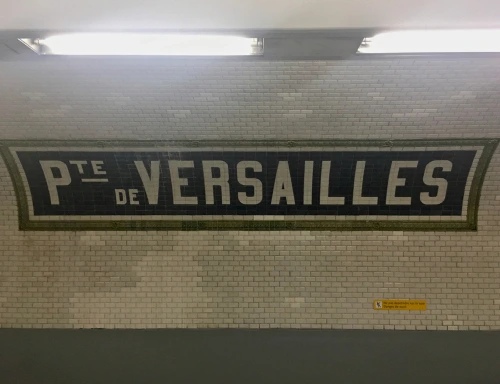
I grew up in Paris, so I’m quite familiar with its metro network and history. There are too many metro station names that fail at their task – namely providing an efficient and useful wayfinding tool. Many are simply too long and cumbersome; others are duplicated, vaguely pointing to a street name but failing to provide an accurate location.

I’ve made an attempt at classifying all the stations in Paris. My first observation is that most stations are named according to roads. My second is that, when identifying a name’s origin, it can occasionally be difficult to decide whether it was named after a street or a person.
Usually, stations that carry a person’s name do it because a nearby street has this same name: it would take much deeper historic research to tell whether a station was named after a person before the street was named, or whether they have been renamed simultaneously.
For now, I am keeping only two stations in the ‘people’ category: Montparnasse-Bienvenüe (named, in part, after the father of the Metro network, Fulgence Bienvenüe); and Robespierre, which according to Wikipedia was named after French revolutionary Maximilien de Robespierre by a local communist mayor in 1936. Early in the 20th century, the nearby Rue Robespierre had a different name – so I’d guess it received its current name at the same time or after the station.
Another tough thing to work out is whether a station is named after a neighbourhood. I kept stations in this category only if there is a nearby street with the same name: otherwise, I considered that the station name refers primarily to the street itself rather than the area, as is the usage in Paris.
Some more observations about streets.
- Most stations take the name of a lateral street (that is, the cross street) – for example, Bolivar or Garibaldi. This is quite an accurate way to pinpoint their position, provided you know the name of the main street they run under.
- Sometimes stations take the name of a nearby street, usually because both the one they run under and the one intersecting them are already taken. Examples include Maraîchers on the Avron and Pyrénées intersection: both these names are already in use elsewhere.
- Some stations take the names of two lateral streets, most often one on each side of the main one they run under – for example, Lamarck-Caulaincourt, or Richelieu-Drouot.
- Some stations have the name of the main street they run under, which is confusing, at best. These fall into two subcategories: stations located somewhere along that street (Commerce, Bercy) and stations located at the end of that street (Gambetta, Mirabeau). The best/worst example is Vaugirard, which is located along the Rue de Vaugirard, which, at 4.3km, is officially the longest street in Paris. Talk about accuracy.
- Some stations have the name of two streets intersecting at its location. Now this, sincerely, is what I call accuracy – the very definition of a unique point. For example: Reuilly-Diderot.
Paris wouldn’t be Paris if things didn’t get more confusing
The problem is that, when a station has the name of two streets, you do not know if the name refers to an intersection, or two lateral streets joining the main street. Sevres-Babylone, for example, refers to an intersection; but Sevres-Lecourbe refers to two lateral streets – or even the same street, which changes its name on either side of the intersection with Boulevard Pasteur.
Another curiosity is Pont de Levallois–Bécon. Pont de Levallois is accurate – the station is indeed located on the eastern side of that bridge. But that side of the river is “Levallois”, not – as the name suggests – Bécon, which is a district lying on the Western side of the Seine.
Then there’s the curious case of Versailles. While it’s not served by the metro, there are three RER or Transilien stations in the area called “Versailles-Something”:
- Versailles-Rive Droite
- Versailles-Rive Gauche
- Versailles-Chantiers
As you probably know, “rive gauche” means left bank and “rive droite” means right bank. Yet there is no river at all in Versailles.
The names actually refer to the Right and Left Banks – the areas north and south of the river – in Paris, 20km away. The stations in Versailles are named not according to the place where they are but to the places they are serving:
- Versailles-Rive Droite trains serve Gare Saint-lazare on Paris’ Right Bank;
- Versailles-Rive Gauche trains serve Gare Montparnasse on Paris’ Left Bank.
The same goes for several other nearby stations in Chaville, Viroflay and Sèvres: all are named according to the place they serve in Paris and not the local waterways.
[Read more: Seven things you need to know about using the Paris Metro]






